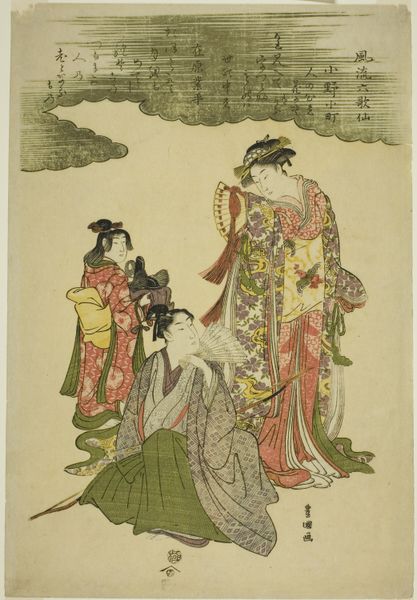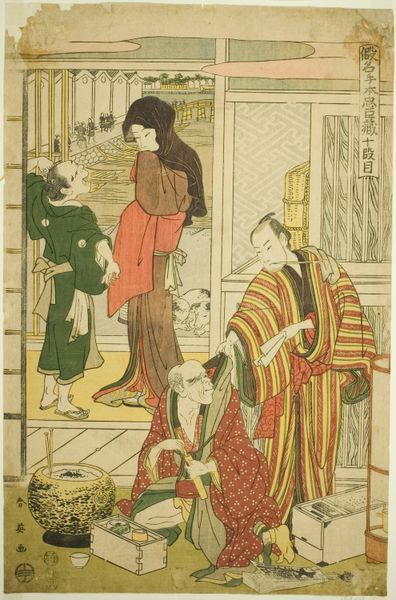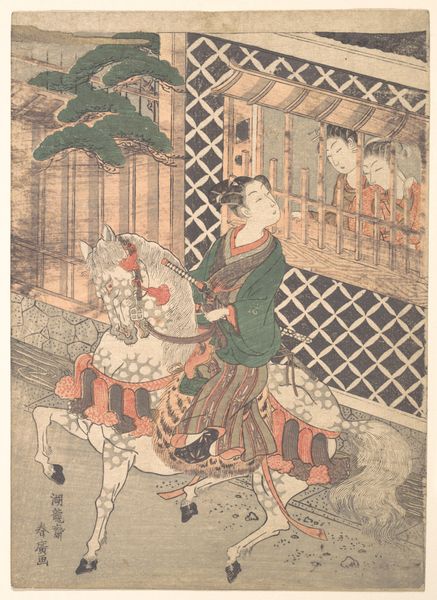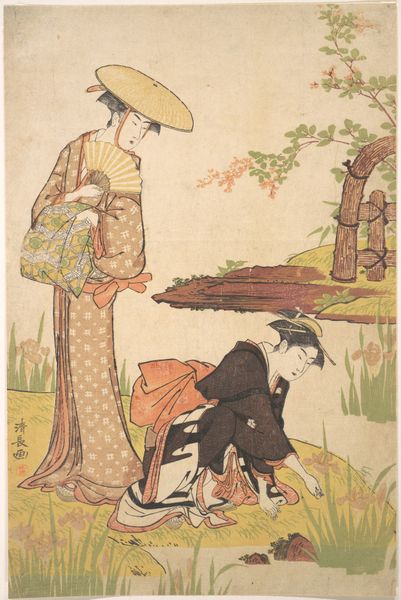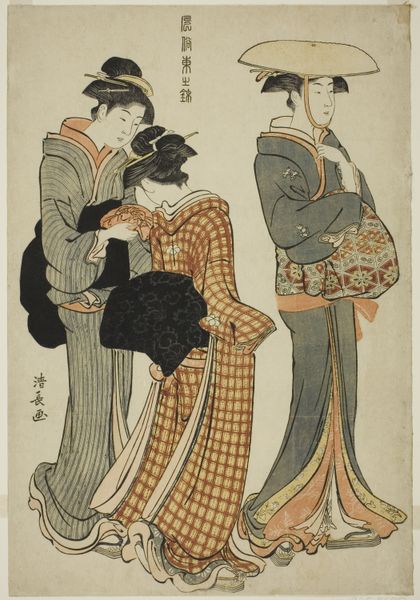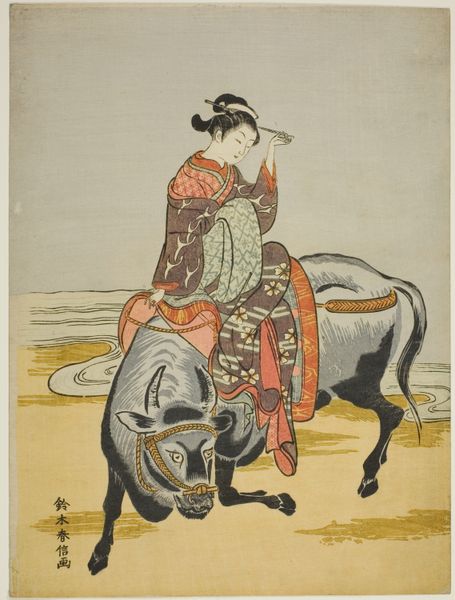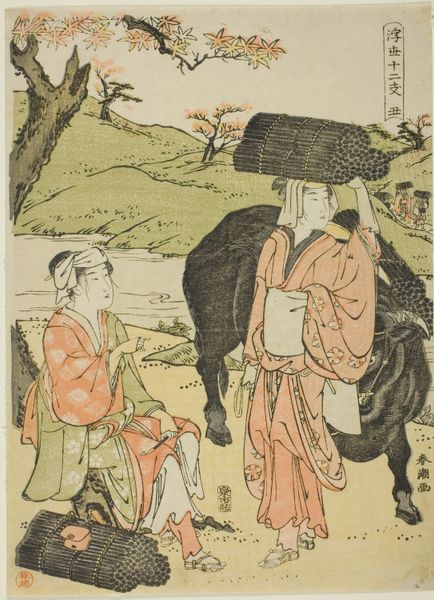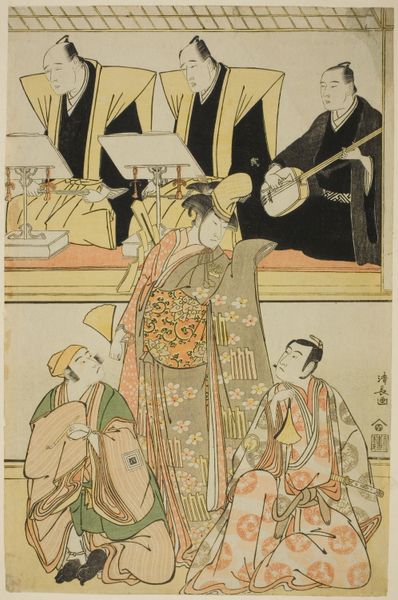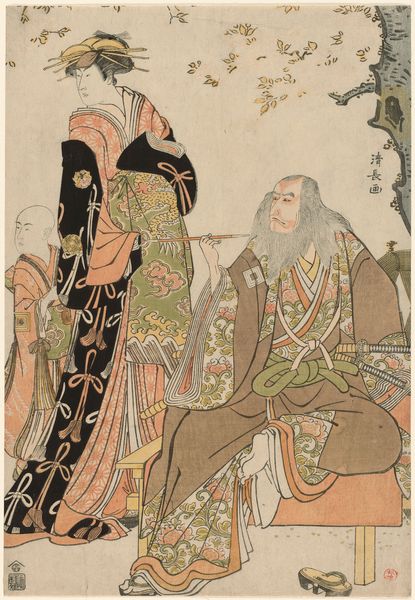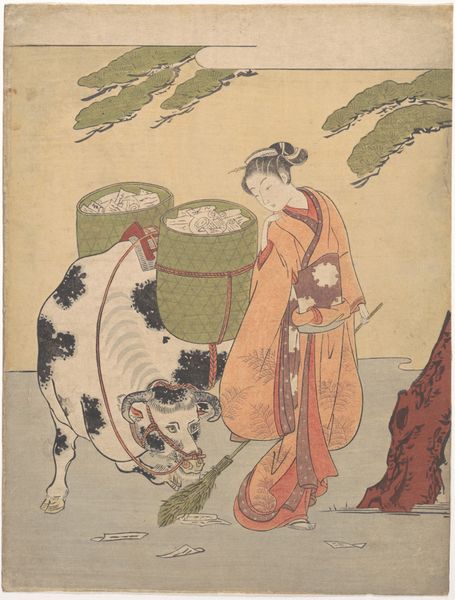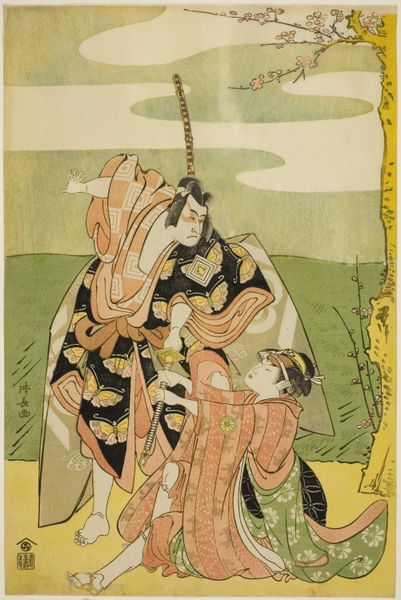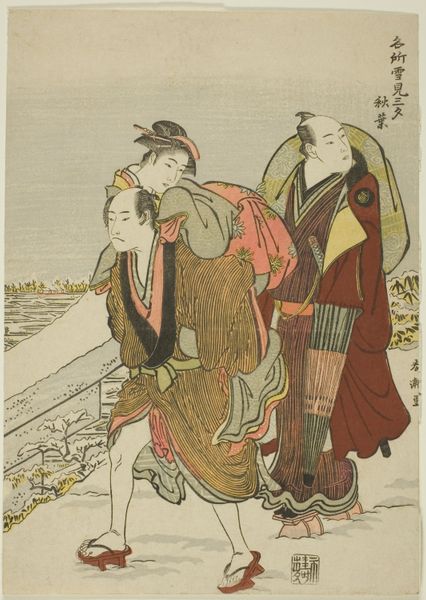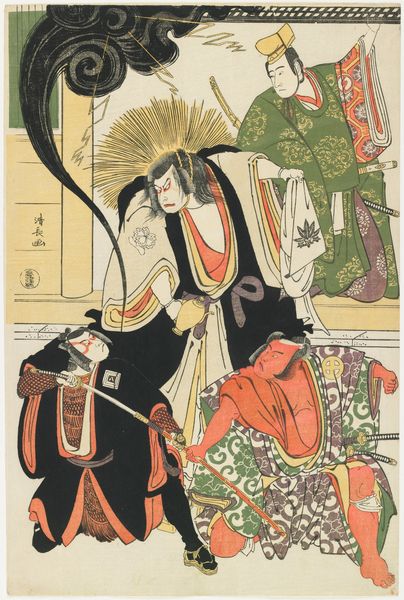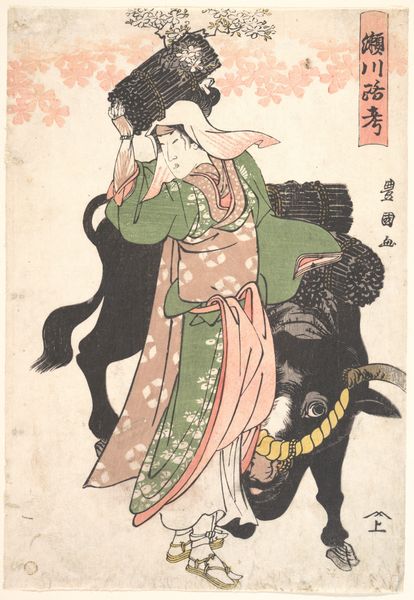
The Actors Ichikawa Monnosuke II as Miyukinosuke, Segawa Kikunojo III as Hatsune-hime, and Ichikawa Danjuro V as Ninnaji no Saibei, in the joruri "Shitenno Oe no Yamairi," performed at the Kiri Theater in the eleventh month, 1785 1785
0:00
0:00
print, woodblock-print
#
ink painting
# print
#
asian-art
#
ukiyo-e
#
figuration
#
woodblock-print
#
genre-painting
Dimensions: 38.7 × 26.8 cm (15 1/4 × 10 9/16 in.)
Copyright: Public Domain
This color woodblock print by Torii Kiyonaga captures a scene from a Kabuki play performed in 1785. It depicts three actors in character, offering us a glimpse into the vibrant theatrical culture of Edo-period Japan. The print's composition and subject matter reflect the social importance of Kabuki as a form of popular entertainment. Kabuki's exaggerated acting styles, elaborate costumes, and dramatic narratives provided a powerful means of engaging with contemporary social issues and desires. The actors themselves were celebrities, and prints like this one helped to disseminate their images and solidify their fame. The print served not just as a record of a performance, but also as a form of publicity, promoting the actors and the theater. To truly understand this artwork, we need to delve into the history of Kabuki, the biographies of the actors, and the social context in which it was produced and consumed. These can be explored through playbills, theater records, and other documents. The meaning of art is something that is contingent on social and institutional context.
Comments
No comments
Be the first to comment and join the conversation on the ultimate creative platform.
